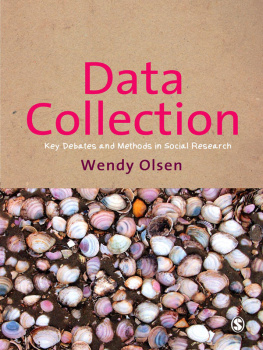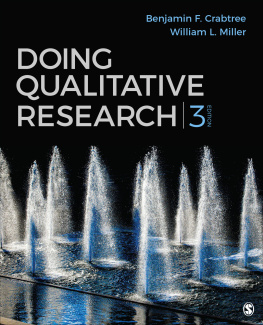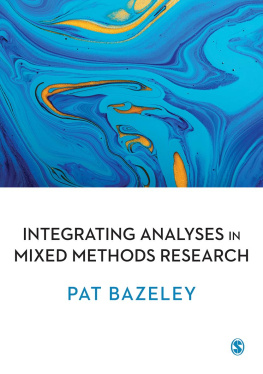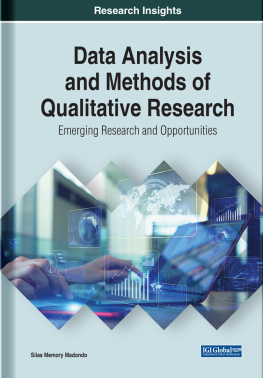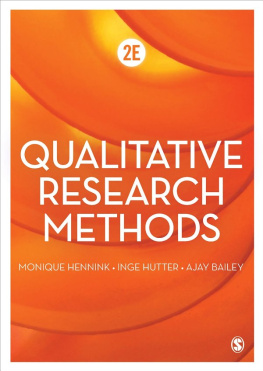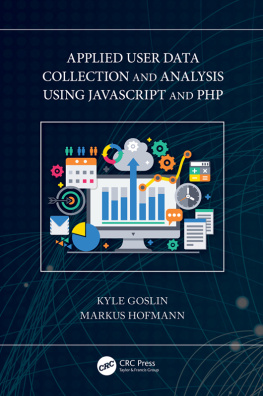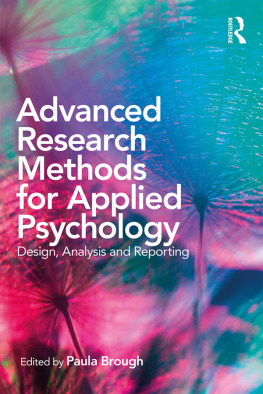Data
Collection
SAGE has been part of the global academic community since 1965, supporting high quality research and learning that transforms society and our understanding of individuals, groups, and cultures. SAGE is the independent, innovative, natural home for authors, editors and societies who share our commitment and passion for the social sciences.
Find out more at: www.sagepublications.com

Data
Collection
Key Debates and Methods in Social Research
Wendy Olsen

Wendy Olsen 2012
First published 2012
Apart from any fair dealing for the purposes of research or private study, or criticism or review, as permitted under the Copyright, Designs and Patents Act, 1988, this publication may be reproduced, stored or transmitted in any form, or by any means, only with the prior permission in writing of the publishers, or in the case of reprographic reproduction, in accordance with the terms of licences issued by the Copyright Licensing Agency. Enquiries concerning reproduction outside those terms should be sent to the publishers.
SAGE Publications Ltd
1 Olivers Yard
55 City Road
London EC1Y 1SP
SAGE Publications Inc.
2455 Teller Road
Thousand Oaks, California 91320
SAGE Publications India Pvt Ltd
B 1/I 1 Mohan Cooperative Industrial Area
Mathura Road, Post Bag 7
New Delhi 110 044
SAGE Publications Asia-Pacific Pte Ltd
33 Pekin Street #02-01
Far East Square
Singapore 048763
Library of Congress Control Number: 2011921429
British Library Cataloguing in Publication data
A catalogue record for this book is available from the British Library
ISBN 978-1-84787-255-5
ISBN 978-1-84787-256-2 (pbk)
Typeset by C&M Digitals (P) Ltd, Chennai, India
Printed in India by the Replika Press Pvt. Ltd
Printed on paper from sustainable resources
Contents
About the Author
Wendy Olsen works at the University of Manchester. She has taught in the areas of development studies, sociology, development economics, applied statistics, and research skills. Her research interests include gender and British labour markets; economic and social aspects of labour markets in India and in South Asia generally; moral economy of child labour; gender pay gaps; and research methods. Her specialist areas include the regulation of labour markets; feminist analyses of labour relations; labour supply; and mixed methods cutting across the qualitativequantitative divide. Her publications include Rural Indian Social Relations (Oxford, 1996); The Politics of Money, with F. Hutchinson and M. Mellor (Pluto, 2002); and Realist Methodology (ed., 4 volumes, Sage, 2010). She is currently working on fuzzy set causal analysis, causes of gender pay gaps, institutional change and peoples habitus, and moral reasoning strategies.
Preface
In this book, data-collection methods are highlighted across a wide range of examples. I explain a variety of exemplars and then use them to examine the main concepts related to data collection. The empirical examples come from the USA, South Africa, UK, India, and other countries. The key concepts covered support data collection for all kinds of qualitative research, surveys, questionnaires, in-depth quantitative research, integrated mixed-methods research, interpretation, and case-study research.
This book is distinguished from others in avoiding a rigid split between different schools of thought within methodology. I question the usefulness of the quantitativequalitative divide in particular. The chapters are organised to be useful to those who want to bridge this supposed divide.
I am grateful to several anonymous reviewers of the manuscript who helped me to refine the ideas. Thanks also go to the editors and copyeditors, especially Vince Hunt. I also thank the University of Manchester for providing a sabbatical semester, the University of Gteborg, and the Arnold Bergstrsser Institute for Cultural Studies at the Albert Ludwig University of Freiburg which provided a great atmosphere for writing.
Wendy Olsen
Manchester 2011
Introduction
As a reader of a book like this, you may want to know about cheap and easy data collection, sophisticated data collection, interviews or ethnographic data collection or mixed-methods forms of data collection. All these forms are mutually consistent and can be readily made feasible in practice. The best time to read this book is at the beginning of a research project, but even in the later stages it is worth using it as a handbook to review your progress and to hone in more closely on that main, clearly-seen, well-focused research question!
). These concepts underpin a strategic approach to data collection.
) of data because the intentions about coding affect how the data collection should be organised. Use good project management to make sure that when considering a return to the field you do not miss important project deadlines. This book helps focus your mind on the kinds of data that will give you useful representations, helpful insights, and in-depth transcripts of just the right kind.
of large-scale datasets. Since many of these datasets are free, the researcher just needs quick and easy access methods such as NESSTAR to get wonderful small datasets. From these one can make accurate charts and tables. In this sense data collection is taken to include the reuse of secondary survey data.
Case-study research (. This exciting part examines a variety of mixed-methods research design strategies in so far as they require data collection. However, the whole book can help a mixed-methods researcher to choose and refine their methods, so there is no single chapter about mixing methods together.
The book concludes in ).
This book offers important help to many kinds of researchers. Evaluation experts, market researchers, students doing research projects, doctoral researchers, management researchers, and people working in education settings who want to research an educational site or find patterns in sets of exam results will discover plenty of depth in it for them.
Health and psychology researchers will find it of special relevance because its methodological basis in realism is consistent with both natural science and social science methods. These details are explained in , and it is reassuring to think that the social model of health and the biological model of illness can be made to work in tandem in a research project.
According to my approach there is no schism between the natural sciences as fact-finding and the social sciences as exploring representations. Both offer representations which can be contested, but both rest on a foundation through their grounding in human and natural reality. Different standpoints that (really) exist can be reconciled and tolerated, with a growing awareness of when people are actually promoting falsehoods or using ethically undesirable frames of reference. Standpoints and representations are strong themes in . Having taken this stance, like many other realists, I support a strong ethical approach to choosing the purposes and methods of research.
Best wishes for your research adventure!
Wendy Olsen
Manchester 2011
Part 1
Data Collection: An Introduction to Research Practices
1.1 Research and Data Collection
Doing research is much more than just gathering information or writing a description as a journalist would. Research consists in more intensive study, usually involving getting information that would surprise some audiences, and analysing the information carefully before writing up the results. The best research uses data in an original way or offers some new and exciting interpretation of existing data. Excellent research has to use evidence very carefully. Sophisticated data collection offers ways to plan and execute the best kinds of research. Many research outputs take a written form, but excellent research also results in soundbites that can be offered to practical audiences or in the media. These soundbites (punchy sentences) are only useful if the reader or listener can trace back to the original detailed research outputs, and perhaps even scan and scrutinise the data and data analysis themselves. The best researchers develop a strong reputation for systematic, logical and well-grounded research methods.
Next page
